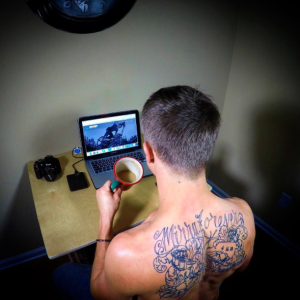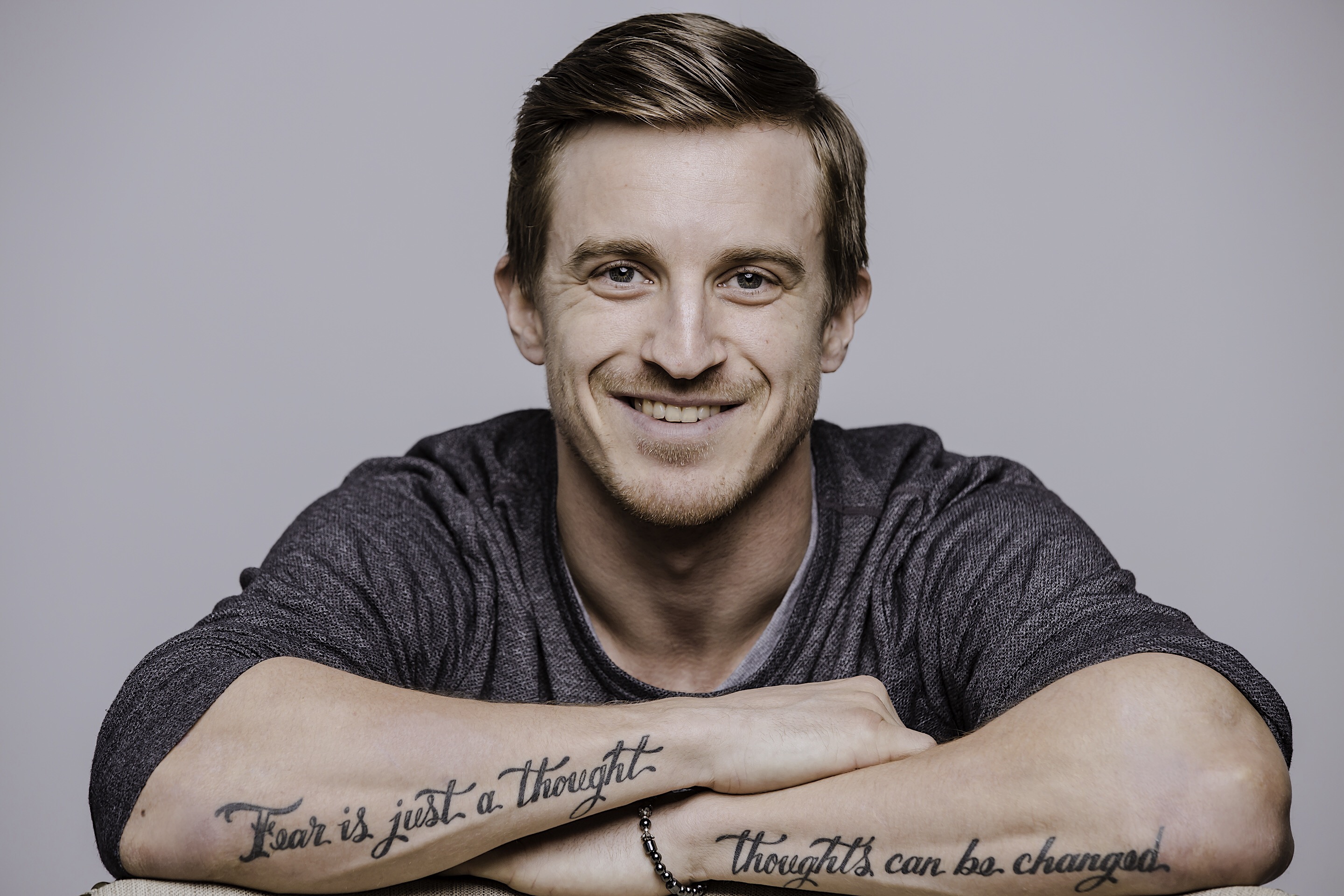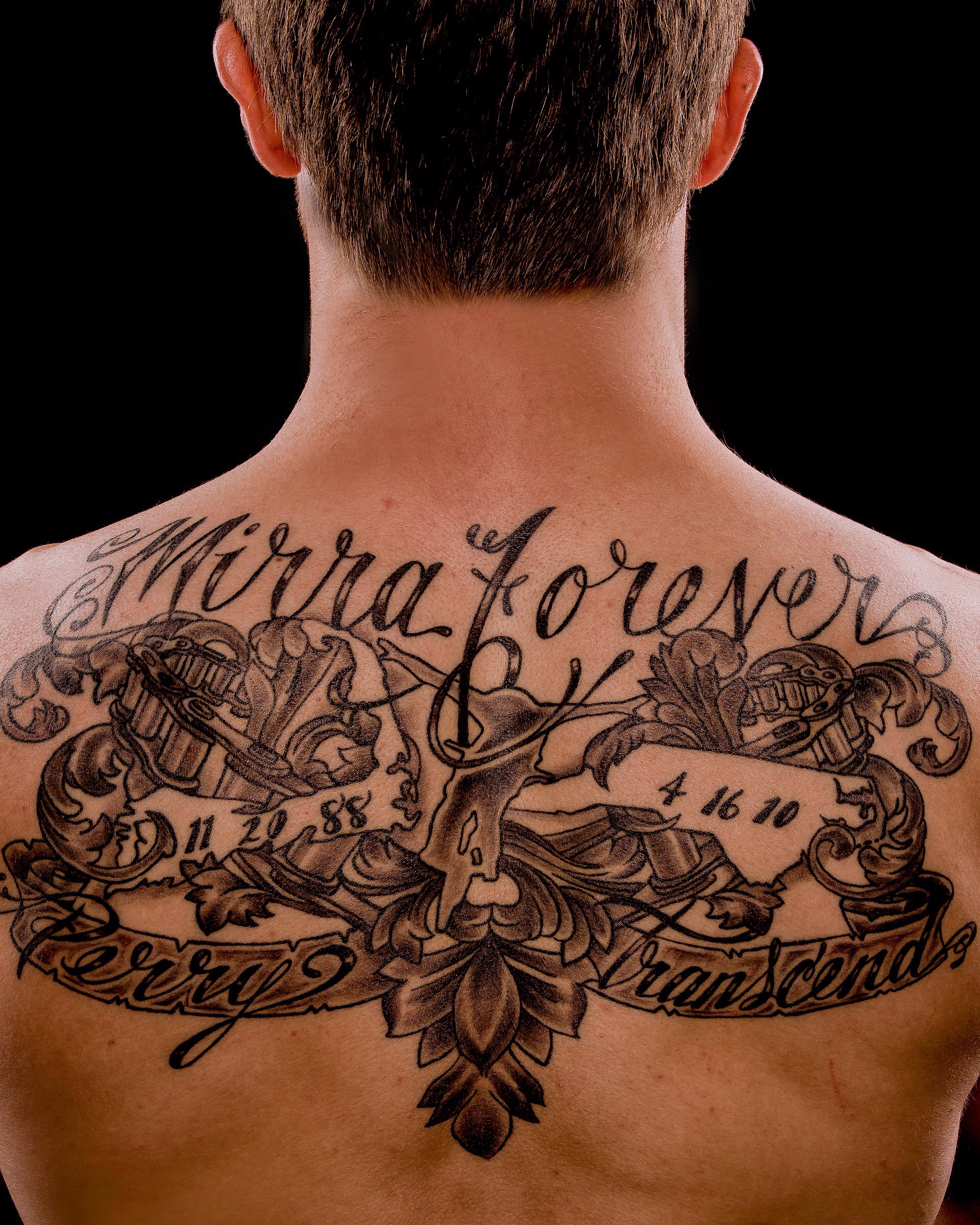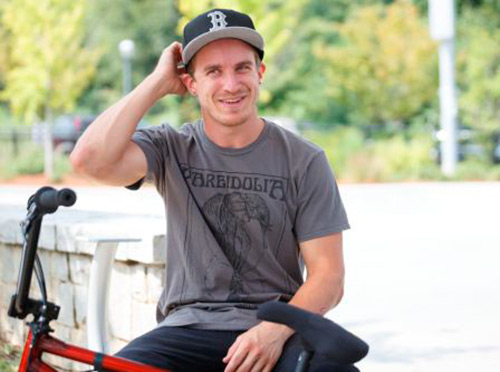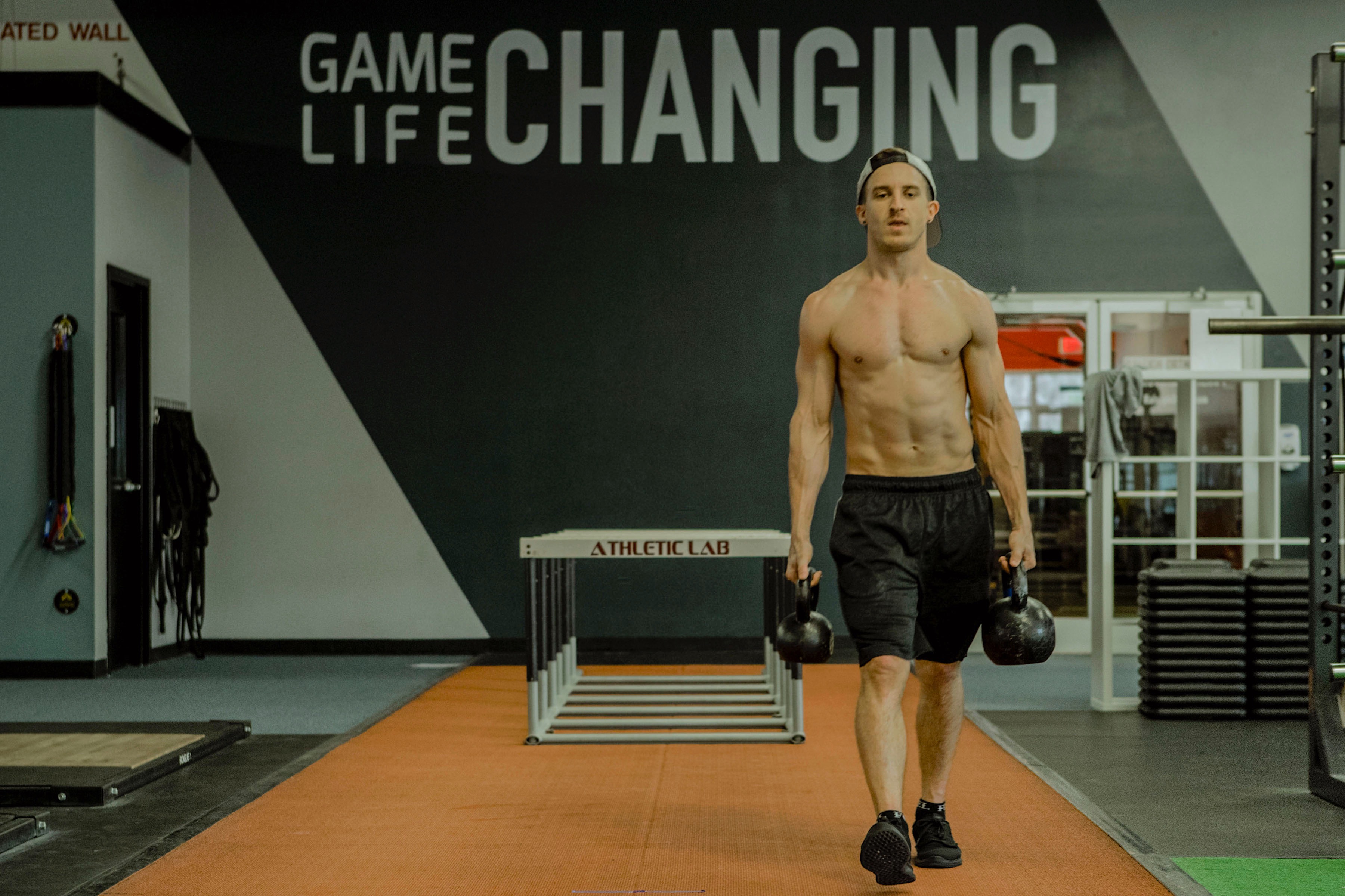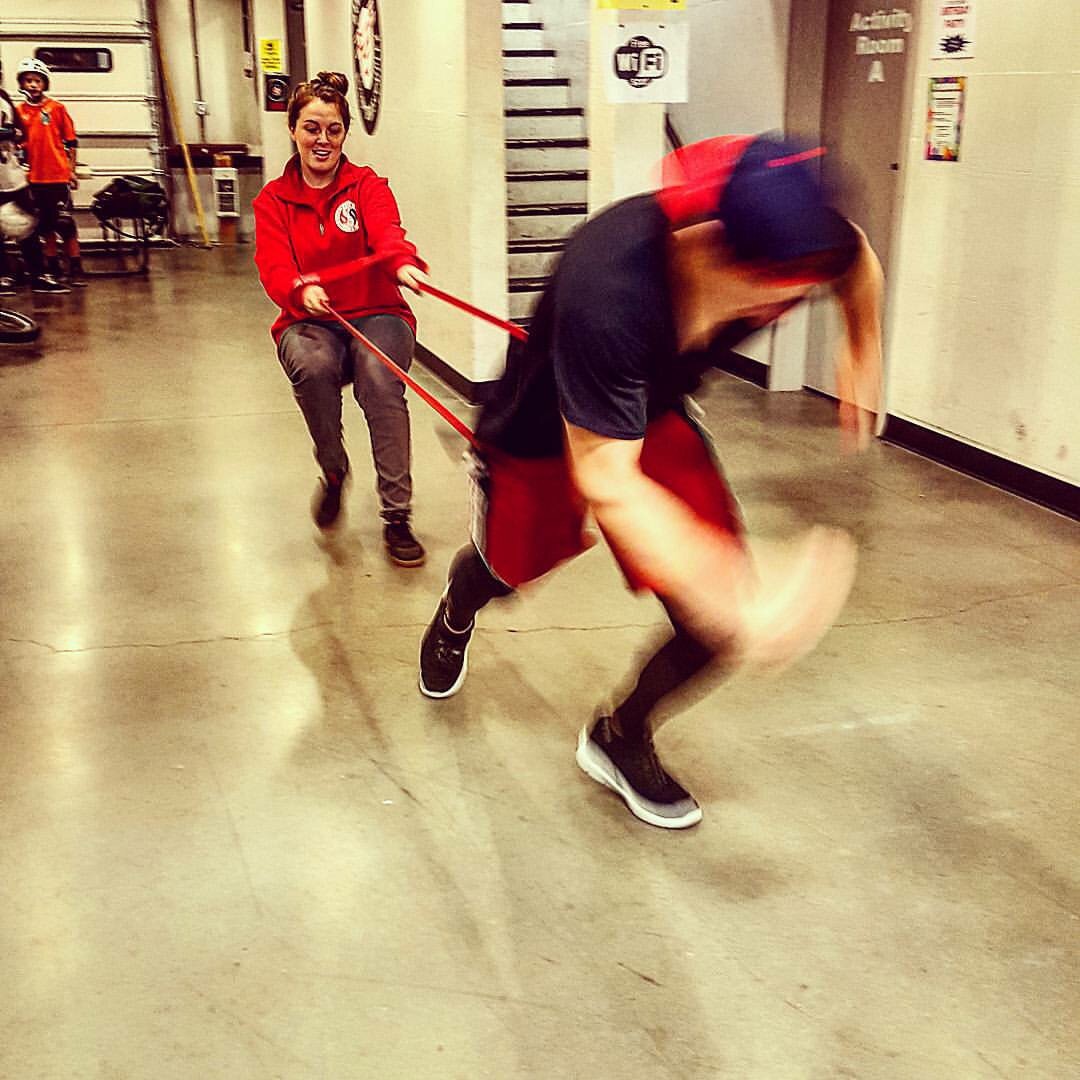Friday, March 3, 2017.
“Tufts Medical Center in Boston just called with my latest MRI results: There are two new masses on the right side of my brain the size of peas (about 8mm in size from residual growth), where the surgery was done. My options are to follow it and see if it changes in growth, MRI no sooner than six months, Gamma Knife radiosurgery or full-on open cranial surgery. Haha, yay.”
Written by, Brian Tunney
http://xgames.espn.com/xgames/bmx/article/19197792/josh-perry-quest-progress
“The message arrives in text form from Josh Perry, a 27-year-old professional BMX rider about to enter the 2017 competition season. A week before, we had spoke on the phone for an hour about his life as a professional BMX rider currently living and training in Cary, North Carolina, and how he was aiming to push himself into a larger role as an advocate for nutritional health and positive thinking, working with brands outside of BMX to help expose larger audiences to the passion that he’s devoted his life to.
A week later, the above message arrives. Ordinarily, the news has the potential to derail an entire day or year, let alone positive ambitions for the future. But Perry isn’t like anyone I’ve ever met before. On top of all of the common injuries that accompany the life of a pro-BMXer, this isn’t Perry’s first experience with masses in his brain. In fact, this is his third time.
Perry quickly follows up with another text message: “Just rode a morning session and rode just as well as I’ve been riding. Nothing has changed if I don’t allow it to.” This from a guy who has already had his skull cut open to remove a large tumor, while doctors stopped the flow of blood to his brain through an artery in his groin.
“If I didn’t hit my head riding, I’d be dead.”
Perry’s history with brain tumors began in March of 2010.
Perry was attempting to learn a new BMX Park trick on a quarterpipe when he over-rotated and landed off the bike, crashing down on his shoulder and head. Although he was wearing a helmet, Perry decided to undergo an MRI because of the fear of traumatic brain injury. But this wasn’t Perry’s first bout with injury as a BMX professional. There were lingering, unanswered issues in his recent medical history. Throughout that past year, he had been experiencing periods of intense headaches coupled with bouts of temporary blindness. After repeated doctor visits and an attempt by doctors to get Perry on pain killers, nothing had been diagnosed.
Essentially, it took a BMX crash (the exact outcome Perry aimed to avoid) to get him to undergo a brain scan and discover the source of his symptoms.
But the outcome of the examination was not anything that he had expected. “I wanted to get an MRI to make sure my brain wasn’t swelling and the doctors told me ‘Yeah, you have a large mass that shouldn’t be in your brain and it’s a tumor, and we’re not sure it’s cancerous or benign but it needs to come out.'”
Perry was 21 at the time. Afraid and alone, Perry’s mind began to race. “First thing I thought of was ‘I’m dead.’ The second thing I thought of was riding BMX,” says Perry. With the doctor still speaking to Perry, he stood up and walked out of the office. “I remember them trying to stop me. I wasn’t running or anything, I was just zoned out, dealing with that thought of fearing for my life, and also sad that I wasn’t going to be able to ride anymore. All I thought about was riding.”
Perry was diagnosed with a meningioma, a tumor that forms from the meninges layer of the brain. His brain had two of them, growing around the main artery on the left side of his brain. The tumor was also pushing down against his optic nerve, causing his vision to blur. He was given two choices — have surgery to remove the tumor, or die. “The tumor was too large, and growing too fast, that any other treatment wouldn’t do the job,” says Perry. “It wasn’t a choice.”
At the time, Perry was coming into his own as a respected and renowned BMX Park professional. He was sponsored by BMX brands such as Eastern Bikes and Demolition and was riding in national competitions such as ESPN’s X-Games and Mountain Dew’s Dew Tour. After moving to his adopted hometown of Greenville, N.C. several years earlier (legendary BMX home to Dave Mirra, Ryan Nyquist and more), Perry was beginning to court media interests and bigger opportunities within the realm of professional BMX riding. “I was living my dream,” he says.
“That crash changed everything.”
Immediately, doctors scheduled surgery for him to have the tumors removed on April 16, 2010. And in the days that followed his diagnosis, Perry experienced a range of emotions that dealt with his own mortality and approach to life. “I felt so fearful, sad and alone because I had no one to relate to,” says Perry. “I was never going to ride again, and if I did, I figured I wouldn’t be able to get back into it fully for a year, and then, I was also thinking, ‘Oh, I might die, this is crazy.'”
Then, almost as if Perry’s inherent BMX thought process kicked in, a change occurred. In the same way that he had tackled and mastered infinitely impossible BMX tricks over time, he was not going to let his diagnosis hijack his life. Fear and sorrow took a back seat as a sense of positivity overwhelmed himself. “I started to shift my mindset,” he says. “I looked at research, statistics, rehab and it pushed me to be positive. I kept visualizing riding, I soaked it all up and turned that negativity into fuel for me to be positive and believe that I was going to ride again.”
Days later, Perry entered Duke University Hospital to undergo a four-hour craniotomy to remove the tumors. He was required to sign legal paperwork stating that the hospital was not liable for his death, additionally acknowledging the dangers that came with the surgery, including stroke and paralysis.
“The last thing I remember when I was falling asleep was telling my friends and family that I love them, but I was just thinking about riding again and being alive,” says Perry. Over six hours later, the surgery was completed, and tests on the tumor later revealed that it was benign. But the surgery was not without complications. Because of the location of the tumor, the surgeon needed to invest extra time into precisely cutting it out from the artery it was embedded around.
Later that day, Perry awoke following surgery. “I came out, I could see, hear, move, and thought, ‘Alright, I’m not paralyzed. Alright, cool.'”
The surgery was a success. And three months later, Perry flew to the U.K. to compete in an international BMX Park competition dubbed NASS. He placed ninth in the Pro class. “I was pretty pumped,” he says.
“It’s a miracle that I also didn’t get diabetes.”
At the end of 2010, with checkups still underway, a BMX friend recommended a Netflix documentary to Perry entitled “Food Matters.” It clicked for him, linking diet and fitness to the loose approach of BMX professionals, which inordinately involves unhealthy doses of late nights and partying punctuated by fast food meals and heavy amounts of sugar. Again, Perry’s mindset began to shift. By definition, professional BMX riders are almost encouraged to avoid being termed “athlete,” invoking lifestyle over the sport and a no-rules approach to riding/training. But Perry was beginning to connect the dots, identifying how intrinsically linked his diet, fitness, and riding were. Slowly, he began to wean himself off soda and fast food. “I don’t eat that much sugar in a month now compared with what I was eating in a day,” says Perry. “I was partying a lot, eating fast food, drinking soda, young and living on a budget, all of it was horrible.”
Two years later, following scores of follow-up exams, healthy BMX competition placings and the chance to design a signature product with then-sponsor Eastern Bikes, Perry was in India performing BMX demonstrations when his mother reached out to him. A recent MRI had revealed two new masses growing in the front and rear of his brain. “I talked to my surgeon, and he recommended Gamma Knife Radiation treatment,” says Perry. “But after that second diagnosis, that’s when I really got into holistic health and nutrition, the biology of food and how it interacts with your body. And how your mindset can change the chemical makeup of your body and your brain.”
Perry’s first Gamma Knife Radiosurgery happened on Nov. 22, 2012. The process, which Perry likens to an MRI, is a type of radiation therapy used to treat tumors in the brain, using specialized equipment to focus about 200 tiny beams of radiation on a tumor or other target with acute accuracy. “The radiation doesn’t damage the tissues it’s going through, but when triangulated, it’s powerful enough to make an impact, like the Power Rangers,” says Perry.
He drove home that same day, a month after winning the annual Trans Jam Pro BMX contest in North Carolina.
“Living with three brain tumors, overcoming brain tumors, being positive and healthy and fit, all of these things are so much bigger than BMX.”
In 2014, following a run of respectable contest placings, the opportunity to design a signature bicycle with Eastern, and a run of healthy check-ups, Perry enrolled in a course with the Institute for Integrative Nutrition to become a holistic health coach, completing the course a year later. “It was a lot of understanding that there’s a good, better and best approach to everything,” says Perry. “But the most important thing I learned was how high blood sugar levels, or consuming sugar at all … how toxic it is for your brain.”
In a sport surrounded by athletes endorsed by energy drink sponsors and processed food brands, Perry’s approach to nutrition is unique, but he aims to change that perception. “I wish more health-oriented companies would get involved in BMX and that more riders would take their health more seriously, and also realize that they have a responsibility to kids to show that,” says Perry.
Through BMX clinics, a website dubbed Daily Brainstorms, and social media channels, Perry is doing all that and more. He added new sponsors to his list of endorsements, including Garden of Life Whole Food Supplements, and he is helping to change the perception of the BMX pro as a lazy, junk food-fueled party animal. He’s starting a new YouTube series titled “Quest To Progress.” And when fellow BMX pro Scotty Cranmer suffered a traumatic brain injury in October of 2016, Perry was one of the first to reach out and send him literature concerning brain health.
In a sport mired by concussions, injuries and shortened careers due to lack of care for the body, Perry has emerged as one of the sport’s first advocates of brain health, while continuing to advance his own riding and goals both in and out of the sport. Following the completion of the 2016 competition season, Perry finished 10th overall in the UCI x Fise World Cup Series and is preparing to take on the 2017 competition season across Europe and the U.S.
But first, he’s scheduled for another round of Gamma Knife Radiotherapy. “The new brain tumors make me a little uneasy, seeing as I was told the original tumor was benign, yet new masses are appearing in other areas,” says Perry. “But I see things different now. I’m trying to help people, by sharing my experience and what it’s led to learning about nutrition and fitness and positive thinking.”
“And, more than ever, I’m still living.” Perry’s second round of Gamma Knife Radiotherapy begins later this year, and he’s begun to take on speaking engagements to discuss his life experience. He’s also now rounding the seven-year mark since his initial diagnosis and surgery.
Josh Perry isn’t just living, he’s seizing.”
-Josh P.
